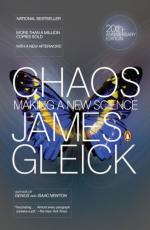
|
| Name: _________________________ | Period: ___________________ |
This quiz consists of 5 multiple choice and 5 short answer questions through chapters 9-11.
Multiple Choice Questions
1. What is the study of general and fundamental problems, such as those connected with existence, knowledge, values, reason, mind, and language?
(a) Information theory.
(b) Philosophy.
(c) Meteorology.
(d) Biology.
2. Who said that calling the study of chaos a nonlinear science was akin to calling zoology "the study of nonelephant animals" in Chapter 3, "Life's Ups and Downs"?
(a) Enrico Fermi.
(b) Harvey J. Gold.
(c) Wallace Stevens.
(d) Stanislaw Ulam.
3. One of the implications of what theorem is that if a continuous discrete dynamical system on the real line has a periodic point of period 3, then it must have periodic points of every other period?
(a) Skawinski's theorem.
(b) Sharkovskii's theorem.
(c) Stronghorn's theorem.
(d) Stevenson's theorem.
4. Albert Libchaber graduated with a bachelor degree in mathematics from what institution?
(a) The University of Chicago.
(b) Johns Hopkins University.
(c) The University of Paris.
(d) Harvard University.
5. Through this work on the study of quantum behavior of superfluid helium, Albert Libchaber invented what?
(a) Thermodynamics.
(b) Fractal compression.
(c) Euclidean space.
(d) Helium in a Box.
Short Answer Questions
1. What was Edward Spiegel's specialty, discussed in Chapter 9, "The Dynamical Systems Collective"?
2. When was William Burke born?
3. In Chapter 11, "Chaos and Beyond," the author asserts that systems behave in simple ways; as long as systems could be reduced to a few perfectly determined, perfectly understood laws, the long term behavior of the systems would be what?
4. Bernardo Huberman was a research fellow at what research center which had been part of the Santa Cruz group?
5. Where was Thomas S. Kuhn born?
|
This section contains 285 words (approx. 1 page at 300 words per page) |

|




